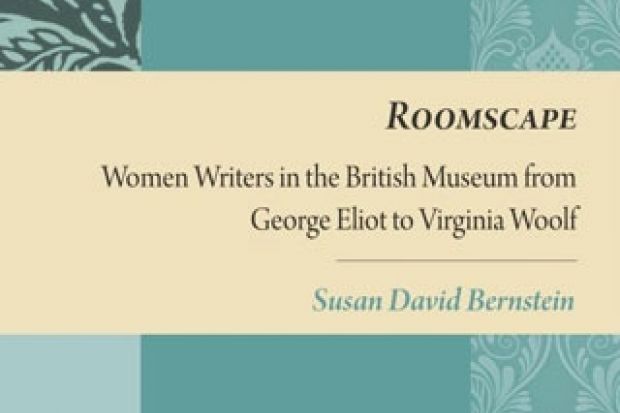Literary conceits make bad history. The reign of Macbeth was noted for progressive change to laws protecting women and children, and by the king’s acts of Christian charity. George Washington never did chop down his father’s cherry tree. The more memorable the device, the more difficult it is to displace. Parts of Virginia Woolf’s A Room of One’s Own fit into this category of adamant distortion. Anyone who has read the essay will know that Woolf’s room for women writers is physically and figuratively antithetical to the libraries of Oxbridge and the British Museum’s Round Reading Room. She compares the latter to “a huge bald forehead” and describes its male scholars as lunatics, miscreants and misogynists. Its catalogue subordinates women to men, and cross-references them with children, brain size, hairiness and attractiveness. Everything about the Reading Room is embedded with a flavour of patriarchal domination, Woolf argues.
Her essay has had centrifugal force, tossing women out of our memory of the library and banishing the ghosts of those who read and wrote there during the Victorian era. But Woolf’s critique rests on a profoundly selective depiction, if not an outright lie. Her excerpts from the catalogue are polemically judicious. She doesn’t mention the female faces she would have seen behind the desks. She forgets to tell us the history of women readers.
Susan David Bernstein’s volume reflects on two women who didn’t like the Reading Room much – Woolf and George Eliot. In contrast to their absence from it, it also investigates some remarkable Victorian figures who not only used its bibliographical resources, but whose work was shaped, in different ways, by their encounters and experiences there. The translations and political activities of Eleanor Marx, Clementina Black and Constance Black Garnett are reanalysed according to their almost daily library attendance. The mutual mentorships of women writers and poets, among them Mathilde Blind, Amy Levy, A. Mary F. Robinson and Christina Rossetti, demonstrate that these women didn’t need an independent income and a lockable room in order to write. They needed what Bernstein calls “a kind of guildhall for women writing outside the home to congregate [in]”, and they found it in Bloomsbury.
Bernstein’s goal is more ambitious than an explosion of myth. She does this with relative ease – the archival evidence speaks for itself. This is where a problem emerges. She impresses a neologistic cornucopia (eg, “cartwheel formalism”, “catalogical reading”, “dome consciousness”) upon her subjects to investigate the coterminous boundaries of gender, autonomy and privacy. The intersection of Michel Foucault’s “heterotopia” with Pierre Bourdieu’s “space of possibilities” might baffle readers looking for straight social history. The book is often written in the language of the more imaginative end of literary criticism. It also contains a number of errors. Karl Marx’s name, address and date of first admission to the Museum are all mistranscribed.
The radical history of the seventh, and last, Reading Room of the British Museum is well known. From the democratic design of Antonio Panizzi, an exile, initiate and a man condemned to death for his political activities, to the late-19th-century gathering under its dome of what Wilhelm Liebknecht called “the scum of Communist Europe”, the library was always a cauldron of revolutionary ideas. But the feminist history has been overlooked. By drawing women back towards one of the foci of 19th-century intellectual life, Bernstein has done library history a great service. Woolf tried to establish an easy dichotomy between private and public space, interiority and exteriority. As Bernstein argues, the Reading Room challenges this division. The library was simultaneously a symbol of Victorian patriarchy and a catalyst for altogether different social relationships.
Roomscape: Women Writers in the British Museum from George Eliot to Virginia Woolf
By Susan David Bernstein
Edinburgh University Press, 248pp, £70.00
ISBN 9780748640652
Published 19 March 2013
Register to continue
Why register?
- Registration is free and only takes a moment
- Once registered, you can read 3 articles a month
- Sign up for our newsletter
Subscribe
Or subscribe for unlimited access to:
- Unlimited access to news, views, insights & reviews
- Digital editions
- Digital access to THE’s university and college rankings analysis
Already registered or a current subscriber? Login




